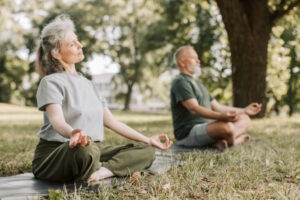
As we age, maintaining an active lifestyle becomes increasingly important for our physical and mental well-being. Pilates, a low-impact exercise system that focuses on strength, flexibility, and overall body awareness, is an excellent choice for seniors looking to stay active and maintain their mobility. In this comprehensive guide, we’ll explore the benefits of Pilates for seniors, address common age-related concerns, and discuss the suitability of Pilates for individuals in their 60s, 70s, and beyond.
Is Pilates good for a 75-year-old woman?
Absolutely, Pilates can be highly beneficial for a 75-year-old woman. Here’s why:
1. Low Impact: Pilates is gentle on the joints, making it an ideal choice for seniors. It reduces the risk of injury commonly associated with higher-impact exercises.
2. Improved Flexibility: As we age, flexibility tends to decline. Pilates incorporates stretching exercises that can help maintain and improve flexibility, making everyday movements easier.
3. Enhanced Strength: Pilates focuses on core strength, which is essential for maintaining stability and preventing falls—a common concern for older adults.
4. Better Posture: Pilates promotes proper alignment and posture, which can alleviate back pain and reduce the risk of posture-related issues.
5. Mind-Body Connection: Pilates encourages mindfulness and concentration, helping seniors maintain cognitive function and mental clarity.
6. Adaptability: Pilates exercises can be modified to suit individual needs and abilities, ensuring that a 75-year-old woman can engage in a safe and effective practice.
For a 75-year-old woman, Pilates can provide a wide range of physical and mental benefits, helping her stay active, independent, and in good health.
Is Pilates good for a 70-year-old?
Yes, Pilates is an excellent choice for a 70-year-old individual. Many of the same benefits that apply to a 75-year-old woman also apply to a 70-year-old. Additionally, Pilates can help address specific concerns commonly associated with aging, such as balance and joint health.
1. Balance: Pilates exercises often include stability challenges that can improve balance and coordination, reducing the risk of falls—a common concern for seniors.
2. Joint Health: The controlled movements in Pilates can help maintain joint health and alleviate stiffness, allowing a 70-year-old to move with greater ease and comfort.
3. Bone Health: Weight-bearing Pilates exercises can promote bone density, which is particularly important for older adults at risk of osteoporosis.
4. Cardiovascular Health: While Pilates is not primarily a cardiovascular exercise, it can be combined with other activities to support heart health.
Pilates offers a versatile and adaptable approach to exercise for a 70-year-old, helping to maintain physical fitness and overall well-being.
What is the maximum age for Pilates?
There is no set maximum age for Pilates. Pilates can be adapted to accommodate individuals well into their 80s and beyond, provided they are in relatively good health and have received clearance from a healthcare provider if they have specific medical concerns.
1. Individualized Approach: Pilates instructors are skilled at tailoring exercises to meet the needs and capabilities of each person. This individualized approach ensures that Pilates can be accessible and safe for seniors.
2. Gentle Modifications: For older adults with mobility or health limitations, Pilates exercises can be modified to be even gentler and more suitable for their unique circumstances.
3. Mindfulness and Mental Benefits: Pilates also offers valuable mental benefits, such as improved focus, stress reduction, and enhanced cognitive function, which can benefit individuals of all ages.
4. Social Interaction: Participating in group Pilates classes can provide social interaction, which is valuable for mental and emotional well-being.
Ultimately, the maximum age for Pilates is determined by an individual’s physical condition and personal preferences. Seniors can enjoy the benefits of Pilates well into their golden years.
Is Pilates good for a 65-year-old woman?
Yes, Pilates is an excellent choice for a 65-year-old woman. At this age, Pilates can offer numerous advantages:
1. Core Strength: Pilates emphasizes core strength, which can improve stability and prevent falls, a concern for many seniors.
2. Flexibility: Regular Pilates practice can enhance and maintain flexibility, helping a 65-year-old woman move more comfortably in daily life.
3. Improved Posture: Pilates encourages proper alignment and posture, which can alleviate back pain and promote spinal health.
4. Mental Clarity: The mindfulness aspect of Pilates can contribute to mental clarity and reduce stress, enhancing overall well-being.
5. Joint Health: Pilates can help maintain joint health and alleviate stiffness, allowing for greater mobility.
For a 65-year-old woman, Pilates can be a valuable tool for staying active, maintaining physical fitness, and enjoying a high quality of life.
In summary, Pilates is an exceptional form of exercise for seniors, offering numerous physical and mental benefits. It is suitable for individuals in their 60s, 70s, and beyond, providing a gentle yet effective way to stay active, improve flexibility, and maintain overall well-being. The suitability of Pilates for seniors is not determined by age but rather by an individual’s health and fitness level, making it accessible to many older adults looking to embrace an active lifestyle as they age.